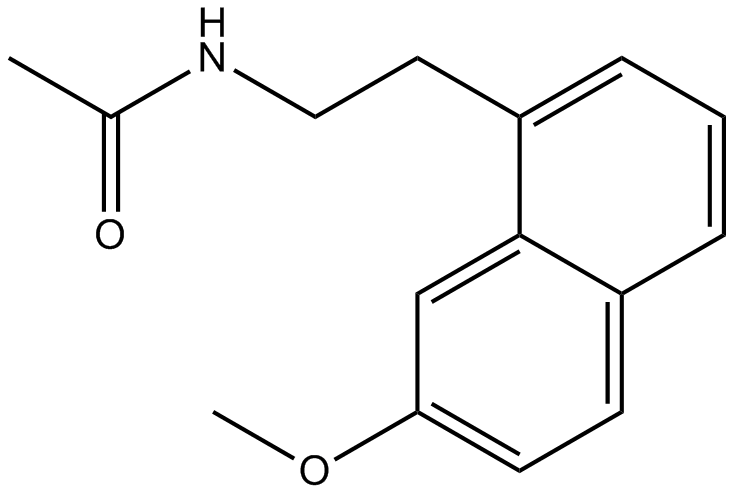Agomelatine (Synonyms: S20098) |
| Catalog No.GC17981 |
L'agomélatine (S-20098) est un agoniste spécifique des récepteurs MT1 et MT2 avec Kis de 0,1, 0,06, 0,12 et 0,27 nM pour CHO-hMT1, HEK-hMT1, CHO-hMT2 et HEK-hMT2, respectivement .
Products are for research use only. Not for human use. We do not sell to patients.

Cas No.: 138112-76-2
Sample solution is provided at 25 µL, 10mM.
Agomelatine is an agonist of melatonin receptors and an antagonist of the serotonin 5-HT2C receptor with Ki values of 0.062nM and 0.268nM and IC50 value of 0.27μM, respectively for MT1, MT2 and 5-HT2C [1].
Agomelatine is a unique antidepressant and is developed for treatment of major depressive disorder (MDD). Agomelatine is selective against 5-HT2C. It shows low affinities to cloned human 5-HT2A and 5-HT1A. For melatonin receptors, agomelatine shows similar affinities to cloned human MT1 and MT2 with Ki values of 0.09nM and 0.263nM, respectively. In the in vivo studies, agomelatine causes increase of dopamine and noradrenaline levels via blocking the inhibitory input of 5-HT2C. Moreover, the administration of agomelatine counteractes the stress-induced decrease in sucrose consumption in a rat model of depression. Besides that, agomelatine exerts alleviated anxiety efficacy in a rodent model of anxiety [1].
References:
[1] Zupancic M, Guilleminault C. Agomelatine. CNS drugs, 2006, 20(12): 981-992.
Average Rating: 5 (Based on Reviews and 30 reference(s) in Google Scholar.)
GLPBIO products are for RESEARCH USE ONLY. Please make sure your review or question is research based.
Required fields are marked with *




















